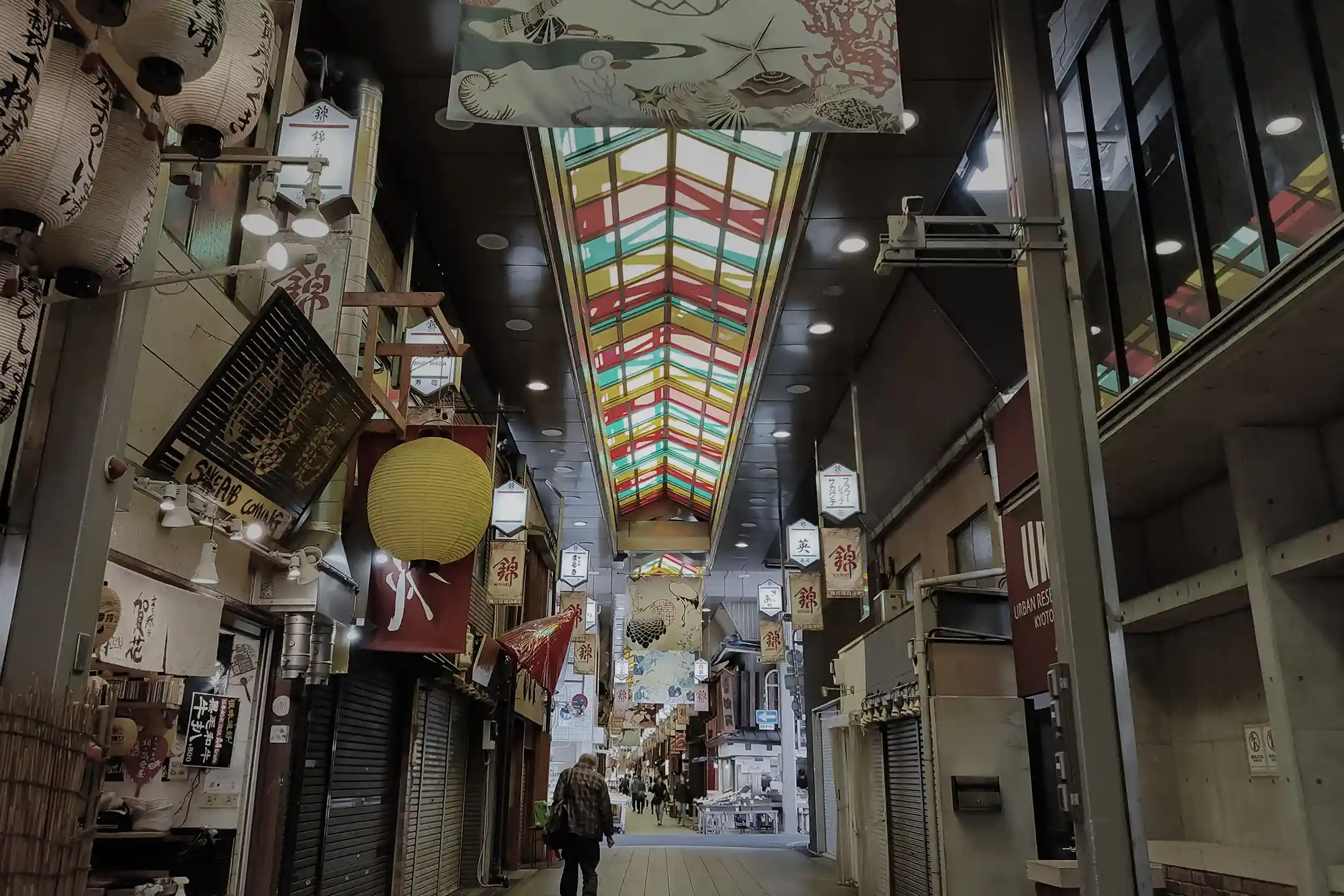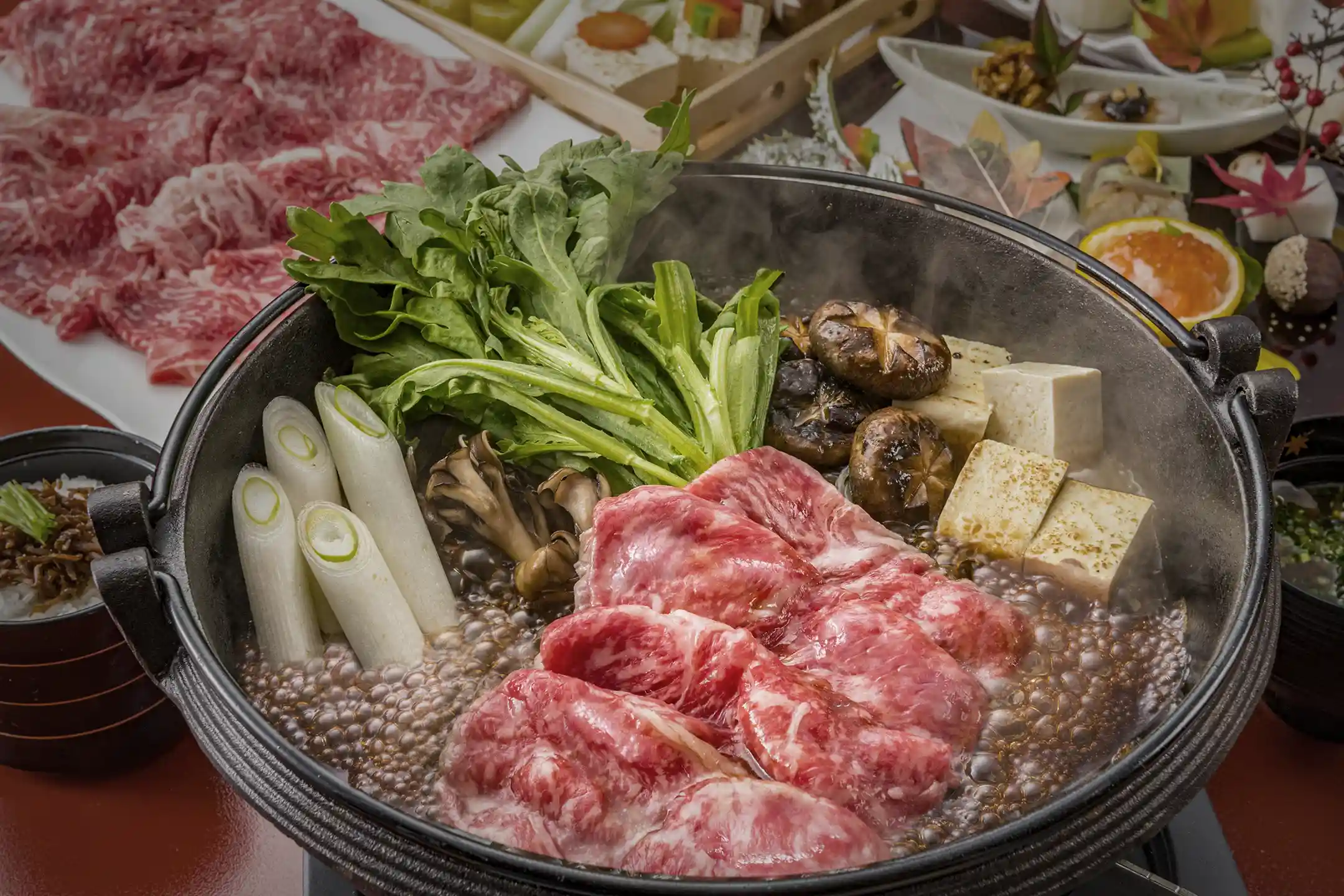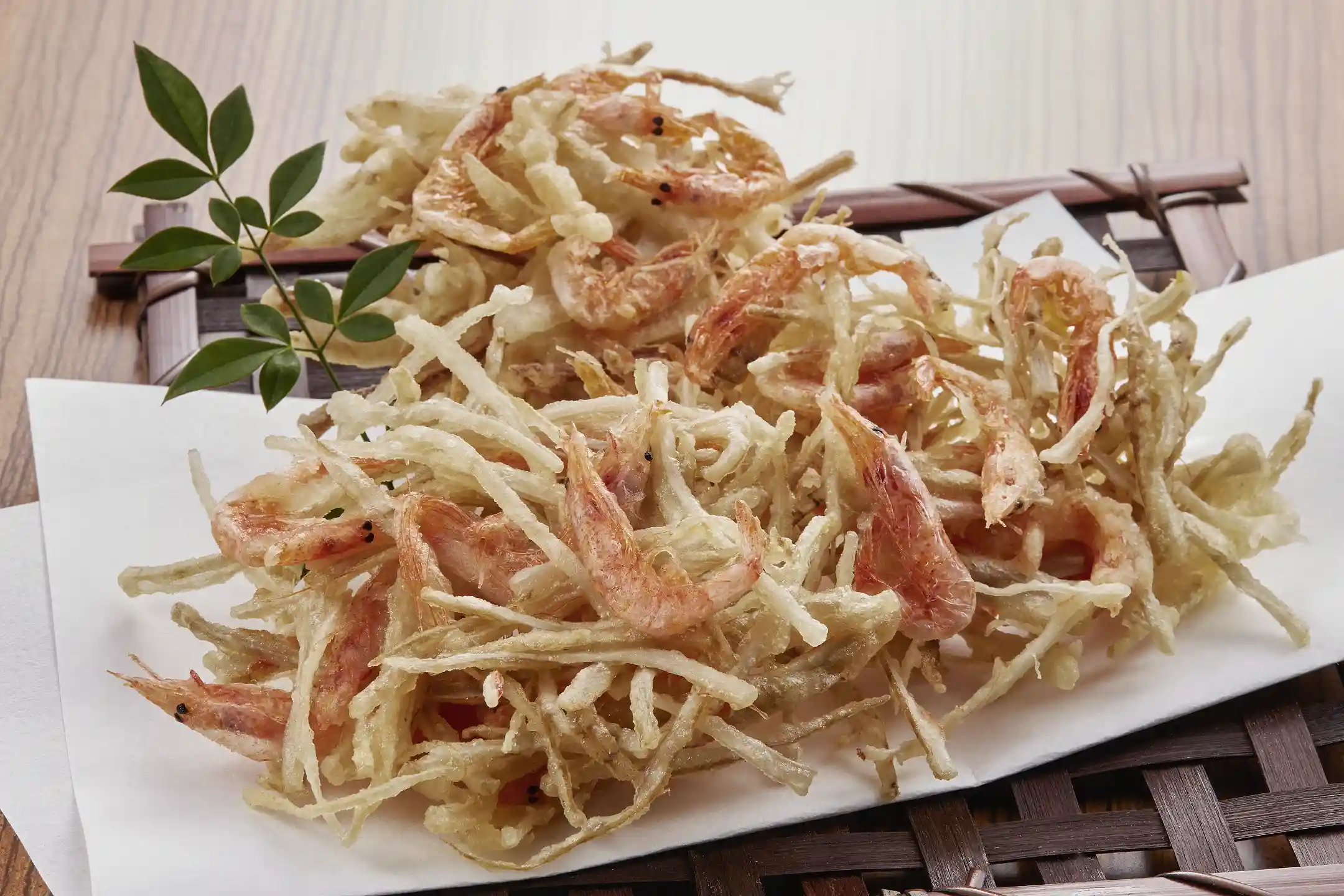Located in the heart of Kyoto, Nishiki Market has sustained locals’ daily dining for roughly 400 years—hence its nickname, “Kyoto’s Kitchen.” At first glance, it may remind you of a European or American farmers’ market. But once you step inside, you’ll sense values and aesthetics unique to Japan.
For starters, the courteous service at each stall reflects the spirit of omotenashi (hospitality). And while you might be used to snacking while you walk, here you’re asked not to, in consideration of how these shared spaces are used. Rather than seeing such customs as strange, uncovering the history and cultural logic behind them can truly enrich your journey.
Nishiki Market is a vibrant blend of past and present: local ingredients displayed under a bright stained-glass arcade roof, traditional shops side by side with modern ones, and more. Labeling these scenes merely as “exotic” can veer into assumptions that paint other cultures as solely mysterious. By taking a culturally open-minded approach—wondering why folks in Kyoto care so much about seasonal produce or how their sense of quality evolved—you’ll collect plenty of delightful “I had no idea!” moments. Join us at Nishiki Market, where tradition and reinvention ripple throughout Kyoto.
In this blog, you’ll find everything you need to enjoy Nishiki Market to the fullest, plus handy tips for exploring the surrounding neighborhood.
The History and Cultural Background of Nishiki Market
Over 400 Years as “Kyoto’s Kitchen

For about four centuries, Nishiki Market has thrived as the city’s “Kitchen of Kyoto.” (*1) It all started in the early Edo period with a fish wholesaler that brought fresh seafood and vegetables into the heart of Kyoto. Unlike many Western markets that simply function as retail hubs, Japanese food markets also serve as community gathering spots, where daily life and commerce naturally intertwine.

An essential part of this market’s growth is the plentiful subterranean water called “Nishiki’s water.” Kyoto has long been known as a “City of Water,” historically blessed with clear groundwater supplies. This allowed fresh fish and produce to remain at peak quality, helping shape local cuisine. In many Western cities, water resource management follows different paths, highlighting how geographical differences lead to distinct food customs.
Long-Standing Shops Preserving Traditional Skills and a Spirit of Commerce
Many stalls here are small, family-run businesses passed down for generations—like Aritsugu, a renowned knife shop (2), or pickle shops carrying on centuries-old techniques. Though these establishments might appear set in their ways, many incorporate new ingredients and methods behind the scenes. Rather than focusing on “old versus new,” you’ll see how they champion tradition while adapting to new influences.
Chatting with shop owners can reveal how much they value quality ingredients, specialized techniques, and the bonds formed through commerce. If you’re used to bigger businesses in Europe or North America, seeing small family shops last for multiple generations might come as a surprise. But it also opens a pathway beyond thinking of Japan as entirely different, letting you find shared values and experiences.
A Unique Space Formed by Arcades and Machiya Townhouses
One of the market’s standout features is its colorful glass-roofed arcade, added during the Showa era (3). It keeps the pathway lively and dry in all weather, while the narrow machiya (townhouses) with their deep interiors reflect Kyoto’s merchant culture.
If you’re coming from abroad, the wooden lattice facades and elongated floor plans may seem unfamiliar at first. But delving into why these buildings look the way they do—such as how they handle fire risks or inheritance rules—makes them all the more fascinating. A culturally open perspective transforms the typical “that’s unusual” reaction into an opportunity to understand Kyoto’s roots.
Basic Information and Access Guide to Nishiki Market
Nearest Stations and How to Get There
Nishiki Market extends along a covered alley just north of Shijo Street, between Teramachi and Takakura Streets. The closest stations include Hankyu’s Kyoto-Kawaramachi and Karasuma, plus the Subway’s Shijo Station—each about a five-minute walk (1). From Kyoto Station, you can hop on the subway or a city bus. Many visitors from Europe or North America praise Japan’s rail system for its reliability, but if you’re wary of public transit or carrying heavy luggage, taxis are handy—just remember that central Kyoto traffic can be busy, so plan accordingly.
Business Hours and Typical Crowds
Most shops open around 9:00 or 10:00 a.m. and close by 6:00 p.m. The market tends to be at its busiest from late morning to mid-afternoon, especially on weekends and public holidays. Local residents often do their shopping early, similar to morning markets in the West. If you want to skip the crowds and enjoy unhurried chats with shopkeepers, aim for a weekday morning.
Market Layout and Arcade Structure
Nishiki Market’s single-lane arcade is lined with more than 130 shops (2). Signage in English and Chinese and public restrooms make it easy for international guests to navigate. Even if all the kanji at first appears overwhelming, multilingual support is growing. While your Japanese might be minimal, friendly staff are used to helping visitors from around the world.
Etiquette and Points to Note
Since local people shop here every day, “no eating while walking” is the norm (3). If you’re used to snacking on the go, this custom might feel a bit restrictive, but it helps prevent collisions along the often-packed walkway and shows consideration for all. Taking pictures is fine, too, as long as you’re aware of others trying to pass. By respecting these guidelines, you’ll gain a deeper sense of how locals value public space.
How to Explore Nishiki Market––Recommended Routes and Must-See Spots
Nishiki Market in the Heart of Kyoto…
Often called “Kyoto’s Kitchen,” Nishiki Market encapsulates about 400 years of culinary heritage. Over 130 shops here sell everything from kyo-yasai (Kyoto-grown vegetables) and seafood to pickles and other local favorites, offering a handy lesson in Japan’s “shopping street culture” (1). Simply walking through helps you sense seasonal changes in produce and the fullness of Japan’s food traditions. If you’ve ever thought “Asian markets are crowded,” you might find Nishiki is actually quite orderly, with each vendor focusing on their specialty in a neat, compact space. Appreciating their efficient use of every nook might lead you to a new viewpoint on design.
From East to West: A Classic Route Covering Popular Shops

One common approach is to start at the eastern gate near Teramachi Street, then wander west toward Takakura Street. You might begin your morning with a quick stop at Nishiki Tenmangu Shrine, just as shopkeepers start their day in the still-quiet alley. The fragrance of fluffy dashimaki tamago (rolled omelet) greets you near the entrance, setting a welcoming tone.
As you venture in, you’ll come upon brightly colored pickle tubs, showcasing Japan’s principle of “eating with your eyes first.” At Aritsugu, the famous knife maker, you can marvel at Kyoto-style blades—sought out by chefs worldwide. Near the Teramachi Street side, you might see local chefs and neighbors stocking up on kyo-yasai, bringing you closer to the everyday rhythm of Kyoto’s cooking.
Morning or Evening? Tips for Avoiding Crowds
Midday can be especially packed, so if you prefer fewer people around, aim for the quieter 9:00–10:00 a.m. window or later afternoon before closing. That way, you can chat more comfortably with shopkeepers and get your photos without too many passersby. Afternoons on weekends or holidays are peak time, so if you’re after a calmer vibe, planning ahead helps you soak up the atmosphere more fully.
Enjoying Interactions with Locals in a Respectful Way
One of the biggest joys of Nishiki Market is the chance to talk directly with vendors or local customers—but remember that “eating while walking” is off-limits (2). Even if that’s a common habit in your home country, here it’s considered a sign of respect to find a proper place to eat, and it also helps keep the aisles clear. Also, if you want to snap photos of people, a quick polite ask goes a long way.
Discovering Kyoto’s Local Cuisine and Ingredients at Nishiki Market
Kyoto’s signature foods and produce are closely tied to its topography, climate, and cultural history. Indulging in these flavors isn’t just about what tastes good—it can open a window into traditions quite distinct from Western dining.
Signature Dishes: Nama-fu Dengaku, Yudofu, and More
Meandering along Nishiki Market, you’ll likely spot nama-fu dengaku—skewers of steamed wheat gluten, lightly coated with sweet miso and grilled. This specialty hails from the vegetarian cuisine of Buddhist monks, who relied on wheat gluten for protein when meat wasn’t allowed, a practice introduced from China in the late Kamakura period (1). It’s not aligned with Western vegan or gluten-free norms, but if you’re looking to reduce meat, you may find it a fun new alternative.
Yudofu (tofu hot pot) is another Kyoto staple, relying on the region’s exceptionally pure water to give tofu its mild yet rich flavor (4). The dish’s minimal seasonings highlight the tofu itself—quite different from Western cooking, which often features robust sauces or cheese. You’ll experience how Japanese cuisine celebrates the pure essence of each ingredient.
Enjoying Seasonal Kyo-yasai and Fresh Ingredients

Even though the West also appreciates seasonal produce, Japan takes it further, particularly in Kyoto, with a special focus on kyo-yasai like Kamo eggplant or Kujo green onion. Stalls rotate their offerings according to the time of year, often displaying produce so vibrant it looks like an art exhibit. Observing this interplay between nature and daily meals can hint at how inclusive Kyoto’s culinary scene is, welcoming various tastes and preferences.
Culinary Culture, Artistic Presentation, and Beautiful Plating

From obanzai (Kyoto home-style cooking) and pickles to wagashi sweets, many Nishiki Market delicacies resemble miniature art pieces. Presenting food this way underscores a Japanese belief in bringing seasonal themes to the table. Tableware choice is crucial—an approach that might differ from typical Western at-home plating, often more focused on serving size than aesthetics.
Meanwhile, Japanese cooking has adapted certain Western elements, leading to “fusion” or wayō-setchū styles that keep evolving. You’ll likely sense a cultural dynamism, shaped by an openness to new influences.
Hands-On Activities––Workshops and Tours
Beyond tasting local bites, Nishiki Market lets you dive deeper into Japanese cultural life.
Cooking Workshops (Kyoto Pickles, Dashi Classes, and More)
If you want an engaging activity, many shops offer workshops—like learning how to make your own pickles or crafting the perfect dashi (stock). From assembling your own nuka (rice bran) bed to discovering the intricacies of bonito shaving, these lessons give you firsthand familiarity with Japan’s fermentation culture and devotion to umami. Although fermentation exists globally, Japan’s approach resonates with a longer, more climate-tailored tradition. Engaging with these methods can spark ideas about reducing food waste or exploring new cooking habits back home.
Interaction Programs with Local Guides and Artists
You might choose a specialized tour around Nishiki Market or a small-group meetup with local artists. A knowledgeable guide can pinpoint the market’s historical connections, trade practices, and ties to Kyoto’s flourishing arts scene. They could also highlight how women’s roles shaped commerce in the Edo period—a fresh viewpoint if you’re curious about Kyoto’s social fabric.
Similarly, visits to craft studios often reveal how tradition morphs into contemporary art, reflecting a willingness to embrace multiple perspectives. Many travelers find these glimpses reassuring—that even well-rooted traditions keep evolving with the times.
Deepening Your Appreciation of Kyoto Through Craft-Making
Kyoto is famed for crafts like folding fans, yuzen dyeing, and kyo-yaki pottery. Painting your own paper fan or creating a yuzen-style design in a renovated machiya can yield a unique keepsake—and a deeper dialogue about preserving age-old crafts. Instead of viewing crafts as exotic, you’ll see them as an interactive way to honor and learn from local culture.
Cultural and Artistic Spots Around Nishiki Market
After you’ve sampled Nishiki’s culinary wonders, there’s plenty more to see nearby, including shrines, temples, and museums that shed light on Kyoto’s spiritual and artistic richness.
Exploring Neighborhood Temples, Shrines, and Museums Together
Toward the market’s eastern side sits Nishiki Tenmangu Shrine, dedicated to the deity of learning (1). You might find it intriguing how a bustling marketplace sits right next to a sacred site, but in Japan, that’s fairly typical. A short stroll away is Rokkakudo (Chohoji Temple), known as the birthplace of ikebana (flower arrangement). If you’re an admirer of floral art in European churches or museums, you’ll likely spot parallels (2).
Kyoto also offers many museums, from the Museum of Kyoto to the Kyoto International Manga Museum. Anime and manga fans can compare Japanese storytelling styles to Western comics, finding new perspectives on visual narrative.
Renovated Machiya Galleries and Traditional Craft Workshops
If you wander the alleyways around Nishiki Market, you’ll see galleries and studios inside machiya carefully renovated to preserve their wooden bones while showcasing modern art. This interplay of old and new reveals how Kyoto balances heritage and fresh innovation. Spaces like “be Kyoto” might host exhibitions on heritage crafts or vintage fairs, reminding you that art is inseparably linked to local communities (3).
Some studios let you observe artisans as they carve or paint, revealing an artistry that many call “masterful.” Rather than dismissing it as “mysterious Japan,” it’s more meaningful to recognize that these crafts grew from daily life. Hearing these artisans’ stories provides a richer, more human perspective.
Sustainable Tourism in Kyoto––Eco-Friendly Initiatives
Transportation Choices: EVs, Car-Sharing, and Charging Spots
Although Kyoto is known worldwide as a cultural hotspot, the city is also looking ahead with environmentally focused steps. Since 2010, EV car-sharing programs have expanded in the downtown area, and more charging stations have appeared at parking lots and shops (1). While electric vehicles are already popular in Europe or North America, spotting them cruising Kyoto’s historic streets is a sign that age-old traditions can align with new technologies.
Reducing Food Waste and Resource Circulation at Nishiki Market
You’ll notice some produce stalls near Nishiki Market selling “mottainai sets”—slightly imperfect vegetables at lower prices—to cut down on waste. A few shops even spin leftover fruit in manual blenders for smoothies, demonstrating an engaging approach to eco-awareness. By choosing these items, you’re naturally contributing to local sustainability. Yes, garbage sorting here may be more detailed than you’re used to, but it’s another reflection of Japan’s broader sustainability mindset.
Social Contribution Activities for Tourists
In Arashiyama, visitor-led “Clean Times” events invite you to help tidy up streets and parks (2). Joining in not only makes you feel more connected to local life, it also reminds you how preserving historic beauty is a shared mission. While volunteering on vacation is familiar in some Western travel circles, it’s increasingly common in Kyoto too, merging a purposeful experience with the joy of discovery.
Conclusion––A New Kyoto Experience at Nishiki Market

Nishiki Market stands at a crossroads of time. Centuries-old businesses rub elbows with innovators, forming a vibrant microcosm of Kyoto’s broader blend of tradition and reinvention. You might initially think it’s just a lively market, but each stall and ingredient carries a cultural backstory shaped by generational artistry and refined aesthetics.
To be more than a passing observer, you can learn about the market’s deep historical layers, social norms, and culinary philosophies—harvesting those welcome “I never realized that!” insights. Nishiki Market doesn’t just showcase the power of living traditions in Japan; it also highlights how they constantly adapt. We encourage you to explore these seasonal flavors and spontaneous conversations, and see if they shift your perspective on what “heritage” and “modern innovation” can be. By taking a moment to connect at the stalls, or by rolling up your sleeves in a workshop, you’ll likely leave Nishiki Market with a renewed sense of curiosity and a richer understanding of Kyoto itself.
Author Bio

Maoko Shibuya
Content Planner & Writer Holding a master’s in Digital Marketing and experience across global markets, Maoko blends international perspective with a deep appreciation for Japan’s cultural heritage. She plans and writes compelling narratives that reveal the country’s beauty and depth, drawing on her passion for travel, local cuisine, and cultural exploration.





/Kazunoko%20Matsumae-zuke%20(Herring%20Roe%20and%20Seafood%20Pickles).webp)